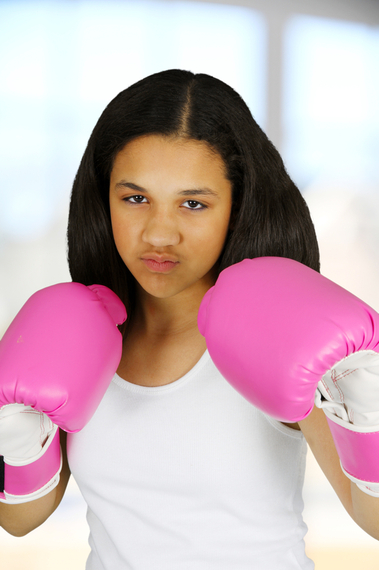
Every parent I talk with about media is terrified. Or angry. Or in despair. I get it, believe me. It is truly worrisome how much media content teaches our kids to look sexy, be skinny (or "ripped" for boys), seek fame and stir up drama. My very mission as the founder of MEDIAGIRLS is to launch a cultural revolution in which we teach girls to determine their own value in society, and use media to reflect that vision. I too am fed up with the trashy, confidence-blasting media culture. That said, I feel hopeful about our ability to turn it around.
As I tell teens during talks and classes, media is not inherently good or bad. It's a messenger, a powerful way to get ideas across to a mass number of people. When it's working at its best, truly humming, it motivates us to give millions of dollars to charity (hello, ALS Ice Bucket challenge), speak up for what we believe (think Ferguson commentary) and be inspired by those who do unspeakably brave acts (look no further than Malala Yousafzai). It's the current content most of us object to, not the vehicle.
This year, we saw the tides starting to turn. We watched empowering ad campaigns that went viral, such as "Throw like a Girl," "Not Sorry," and "Girls Can," to name a few. We cheered on Lorde when she rebelled against a retouched picture of her face on the Internet by posting on her Twitter feed a picture of her actual face, acne and glorious imperfections. We heard celebrities like Kate Winslet and Shailene Woodley speak out against having their cover images digitally altered to make them look half the size. An endless sea of botched Photoshopped images went viral and became laughingstocks.
What I'm hearing from teens of various ages is that they are ready for change. Boys too. Did you know 18 percent of boys in a recent study said that they are highly concerned about their weight and physique? I am pretty sure getting blasted with media images of six-pack abs has something to do with it. Teens are sick of feeling they don't (and can't) measure up to media's impossible standards. Girls should be nice and sexy and smart, but not too smart. Boy should be tough and sensitive and caring, but not too caring. Of course kids feel confused -- and angry. What we need to do is give them a healthy way to channel that.
Of the suggestions I give to kids, here is one of the most important ones that you can share with your own child. It's deceptively simple: "Think about the impact of the messages YOU are putting into world." We are a culture used to snark and irony and not-so-gentle ribbing. It's easy and mindless to talk about the "lame" hair cut of someone at school or poke fun of someone's jacket or post on Instagram images of celebrities who have gained or lost weight. But when we do that, we feed the media beast and make cultural change all the harder. It's okay to tell your child, by the way, that you're guilty of doing this too (assuming you have) and plan to stop.
What if, instead, we all chose to shine the spotlight on someone at school or work who acted kindly, or posted an inspiring quote from a hero or pics of ourselves looking goofy (rather than cool)? What would the ripple effect be? What might it inspire other to do? Challenge your child to try this with you, and compare notes after a few weeks. Do you feel differently? I bet you will. When each person does his or her seemingly tiny part, we make massive change. This is how we will tame the media beast. This is how we launch a media revolution.
